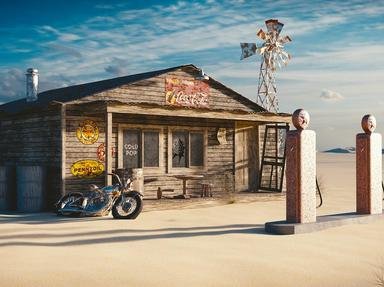Quiz Answer Key and Fun Facts
1. Which of these 1950's male hit makers was never a singer with a Big Band?
2. Which of these top recording artists of my 1952-56 high school years was later recipient of the first ever RIAA Gold Record?
3. Which of these 1950's female hit makers was never a big-band singer?
4. Which chart-topping group started singing in the SPEBSQSA (Society for the Preservation and Encouragement of Barber Shop Quartet Singing in America)?
5. What is the name of the recording artist who produced the most Number One singles during 1956, the year of my graduation?
6. This man had only one fewer No. 1 hits during my 1952-1956 high school years than did The King, Elvis Presley.
7. Specialty numbers can make it big during every era. During my teens there was the corny "It's in the Book" by Johnny Standley. It was No. 1 in November 1952. Both sides of a 45 RPM record made up this one hit: a stand-up comedy routine about "Little Bo Peep" on Side 1, and a revival/gospel hand-clapping comedy song on the flip side. What was the subject of the flip-side song?
8. One of our own homegrown Seattle comedy artists made the national big time in the fifties with two specialty numbers based on the incredibly popular television show "Dragnet." In the late 1950's he produced maybe the very last radio weekly comedy show (yes, on AM radio). Who is he?
9. Which chart-topping vocalist of my high school years was also a world-class jazz pianist?
10. Ernest Ford, from Tennessee, produced a No. 1 hit in late 1955. The song was based on working men in what kind of job?
11. These brothers, of Russian-American descent, out of Massachusetts, were so great! Their body of recorded music from the late 1940's through the 1950's is immense; their combined voices still give me goosebumps. The lead singer-brother went on to a successful solo career. Their big hit during my high school years was based on double-meanings involving an infant. Who were they?
12. These sisters were very successful during my teens, and produced the No. 1 hit of February 1955, "Sincerely". One sister, Phyllis, fell into bad company later, leading her to serious trouble. Who were they?
13. Richard Hayman's own orchestra accompanied him as he played an instrumental solo on the theme song he himself had written for the movie "Ruby Gentry." The recording was on the pop charts for five weeks in 1953, topping at No. 3, and sold over a million copies. What unique instrument did Hayman play (exceedingly well) on this record?
14. During the 1950's, the Billboard lists of "popular" recorded hits was divided into Rhythm and Blues (R&B) and Pop charts. R&B artists tended to be black, and Pop artists white, but never exclusively so. "Crossover" hits were songs that sold well in the "other" record segment. Many "cover" recordings of R&B hits made it big on the Pop charts. Which of these recordings was NOT a Pop cover of an earlier R&B hit?
15. Elvis Presley was, without doubt, The King of recording artists in the decade of the 1950's. He first showed up on the Pop charts in the Spring of 1956, just as the Class of '56 was getting its graduation ceremony together. Then there were Elvis recordings on the Pop charts, typically at the very top, continually for years and years. What is the early Elvis recording, from the Summer of 1956, that became his biggest-selling hit ever?
Source: Author
fritzer
This quiz was reviewed by FunTrivia editor
Bruyere before going online.
Any errors found in FunTrivia content are routinely corrected through our feedback system.

